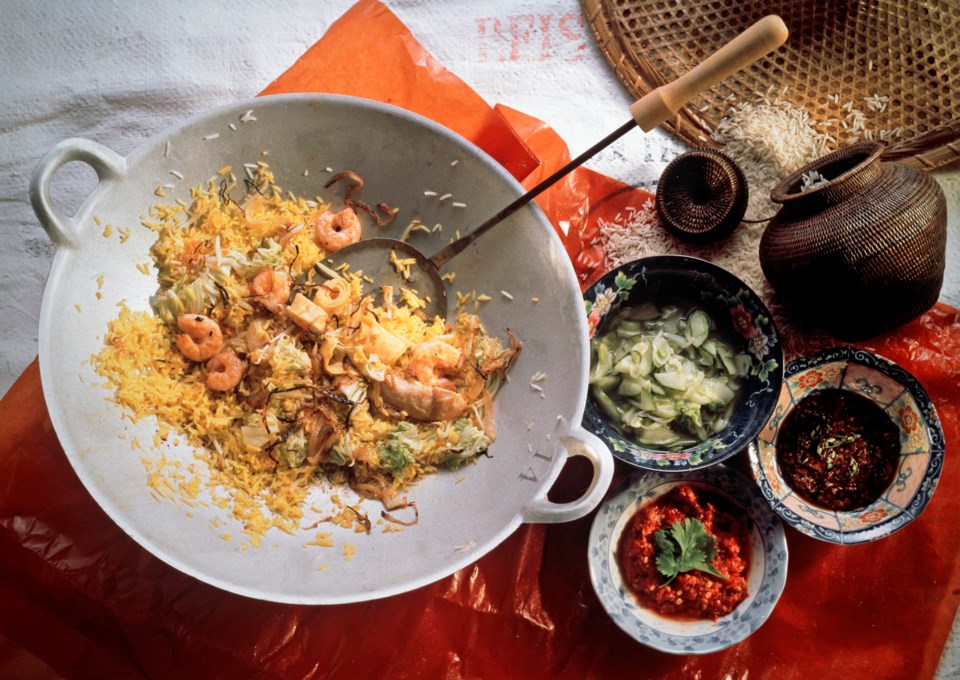In author/chef/teacher Tahera Rawji’s home, the sizzling sounds and smells of fabulous South Asian dishes are accompanied by the drone of an industrial-strength fan… but not in the kitchen.
All the magic happens in a smaller space she calls her “fry kitchen.”
Whether you call them wok, fry or spice kitchens, the reason so many Asian cooks love them is the same: these mini-versions of the main kitchen keep the heady cooking smells from escaping — and lingering — all through the house.
For more than two decades, Rawji has been creating spicy dishes from Pakistan, India and the Middle East. Before any dish makes it into her cookbooks (she has two: Simply Indian and Simply More Indian, Whitecap Books), she develops and tests them in her fry kitchen.
Just off the main kitchen, it has a door, a very large window and a heavy-duty exhaust hood over an industrial size stainless steel stove, a large stainless steel sink, lots of counter space and half of the cabinetry of her main kitchen.
“When I shut the door, no one in my family disturbs me,” she grins. “Because the fan is strong I don’t even hear the phone.”
She tells her students who are serious about pursuing a cooking career to invest in a really good fry kitchen.
“If they can afford to build one in their homes, they will really appreciate how much it cuts down on the smell of garlic or cumin in their home,” says Rawji.
West Vancouver builder Gary Tiwana agrees. In fact, he built a pantry-sized spice kitchen adjacent to his big open-concept kitchen in his own West Vancouver home.
“When my mother visits, that’s where she does all the cooking,” he adds. “I admit there’s more cooking going on in the spice kitchen than in my regular kitchen.”
Tiwana often gets requests from his South Asian clients for a spice kitchen. Of the eight homes he custom built last year, three of them were constructed with two kitchens.
“They are very popular in the Asian culture because Asian cooking can be oily and no one wants those smells to permeate through their home,” says the owner of Paramax Homes. “They aren’t large — typically a standard spice kitchen is six feet by 10.
“Although having said that, recently some clients have asked for larger spice kitchens.”
By and large, clients want their secondary kitchen equipped with a stove, small dishwasher, backsplashes with very little grout (smells can penetrate the grout and linger for days), stone countertops that wipe off easily, cabinets with little adornment and commercial-grade fans with grates that are easy to clean.
“They also definitely want windows to let the natural light in and to provide extra ventilation,” says Tiwana.
Vancouver Re/Max realtor Tony Ling says many of his Asian customers would not consider buying a home without a spice kitchen.
“Most new homes built already have them in because it’s become expected in some parts of the Lower Mainland,” says Ling. “Builders in Richmond and in the west side of Vancouver, where there are many Asian residents, have realized that these smaller kitchens are important to their prospective buyers.”
His clients don’t expect a fancy wok kitchen, but they do expect them to be big enough to accommodate two people and have everything they need to be able to cook.
“Obviously it’s not something that most Canadians need, but it’s not a new thing either.”



